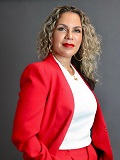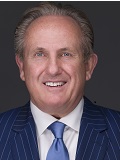
Brianna Wilson,
Editor,
Monitor
This year has kept the equipment finance sector on its toes with a massive banking crisis, continually rising interest rates and consistent concerns about an economic recession. Equipment finance companies and their customers are continuing to deal with the pressure of these and other financial struggles, as well as other company-specific concerns, forcing many to implement changes to their day-to-day business operations and interactions with partners and vendors.
Dealing with 2023’s Unique Challenges
This year’s banking crisis is not the first major disruption the equipment finance industry has faced in the last decade. The COVID-19 pandemic opened the 2020s with obstacles that most company leaders had never dealt with before and whose effects are still

lingering to this day. Life as we knew it came to a halt, and everyone around the world struggled with health, job security and financial concerns on top of a lack of personal connection with colleagues, acquaintances and loved ones, adding to global anxiety and isolation. Even three years after the height of the pandemic, leaders in the equipment finance space are still feeling the effects of the massive industry shift brought on by the crisis.
For Amrita Patel, head of equipment finance at Wells Fargo, and her team, one of the most important lessons of the last year years has been to expect the unexpected and to stay agile in the face of uncontrollable external factors. By learning this lesson, COVID-19 prepared Patel and her team, in some way, for the banking crisis.
“Industry issues have certainly changed the needs of our customers to focus more closely on financial stability and maintenance. As a result, we’re leaning into our customer-centric approach and offering more flexible and customizable options,” Patel says.

Patel and her team are also investing more heavily in compliance and risk management in an effort to ensure clients feel secure collaborating with and trusting Wells Fargo to fulfill their financial needs. On the same note, Patel and her team are placing greater emphasis on client relationships and support, showcasing that Wells Fargo provides solutions- oriented resources and understands the unique challenges its clients and partners are facing.
Eastern Funding is also taking a customer- first approach to the banking crisis. Nancy Robles, president of Eastern Funding, says that the company’s customers are facing the same challenges most of the equipment finance industry is, including rising costs, environmental uncertainty and more.
“With that understanding, we have tried to be supportive business partners by building rock solid relationships [with our customers],” Robles says.

BMO was fortunate to have not been negatively impacted by the instability of the market this year, and has, like Eastern and Wells Fargo, become a reliable and stable source for customers.
“Being a business within a bank that has roots going back over 200 years has demonstrated its value and provided a solid foundation for us to weather the storm,” Dan Clark, head of vehicle and equipment finance at BMO, says. “As customers looked for stability, dependability and longevity, BMO has been an easy sell.”
Uncertainty in the Air
Even for companies that survived this spring’s banking crisis without enduring negative ramifications, there has still been some impact, which has only been compounded by overall economic tumult in the first two quarters of the year, leaving many to question

what the remainder of the year will look like.
Of course, the state of the economy is a common concern. Its unpredictable nature in 2023 has made an already uncontrollable factor even more challenging, forcing companies to prepare themselves to quickly and appropriately respond to each new market fluctuation. However, while every leader is concerned about the path of the economy, each company has unique concerns specific to its own business.
Chris Lerma, president of AP Equipment Financing, believes the banking crisis will not impact the industry much more than it already has, even though there could be a few more bank failures or mergers this year. In such an environment, Lerma says the primary challenge for AP in 2023 has been maintaining portfolio spreads while growing originations, a focus that will continue to be at the top of the priority list for the company for the rest of the year.

“Demand seems to hold up, and equipment inventory levels and prices are starting to normalize; it’s just taking some extra effort to maintain margins and provide a product that commands premium pricing,” Lerma says.
Steve Grosso, CEO and president of Auxilior Capital Partners, says his greatest concerns for the remainder of 2023 are the current credit markets and the potential for increased rate hikes.
“The increased cost of capital across all markets could potentially drive us toward recession,” Grosso says.
Robles’ top concern lies with people: “We are still recovering from a traumatic time [the COVID-19 pandemic] while navigating new uncertainty,” Robles says. “I don’t believe we have taken enough time to recover because we need to survive, and living in survival mode limits our potential.”
Looking at the Future
The equipment finance industry has heard it time and time again: Technology is going to advance at warp speed and many processes in equipment finance will be automated or otherwise assisted by artificial intelligence and other emerging technologies. Companies will begin to leverage the troves of data available from past years and create an even more automated financing process, essentially shifting the industry to adapt a “self-serving” customer base. In this way, some predict new technology will change the landscape of equipment finance altogether, likely quicker than expected.
Patel believes the equipment finance sector will significantly evolve over the next decade as it adapts to changing business and technology environments.
“I feel that the emphasis on sustainability and environmental consciousness will only increase in importance as businesses progressively seek out eco-friendly options and look to comply with local and federal requirements and incentives,” Patel says. “I believe that our continued reliance on technology will support the collection and analyzation of data to identify client needs quickly.”
“Technology has changed and will continue to change the way capital goods and services are acquired and financed,” Grosso says. “Over the next 10 years, we will see completely re-engineered processes and real-time, AI-enabled technology deliver unprecedented speed and access to a radically more robust set of value-added services.”
Clark has been a keen observer of technological breakthroughs in the equipment finance industry and firmly believes that technology is the key to any business in the sector.
“A thorough cost-benefit analysis must be the deciding factor in if, and how, we implement artificial intelligence and other new, emerging technologies,” Clark says. “From past experience, I have found that it is best to be diligent and patient in these circumstances.”
While the equipment finance industry is generally in agreement that new technology, notably artificial intelligence, will shift the way equipment finance operates, no one knows when exactly these changes will begin to impact businesses at a larger scale. For this reason, it is important for teams to constantly explore these new technologies and for businesses to adopt a company culture that embraces change and innovation. “Developing and maintaining this culture starts at the top with the company leaders,” Lerma says.
However, even with the mix of excitement and concern around emerging technologies and the opportunity to become a more efficient industry, the people-centered side of equipment finance will not completely go away. It still need financial experts and representatives to build personal relationships and be a resource for customers. Most of all, the industry will need good leaders to navigate the balance of new technology, inspire major company changes and support the customer-centered approach to equipment finance.
Strong Leadership Is Essential
How leadership is evolving has quickly become an important topic in equipment finance over the last few years. The basis of leadership has shifted and many companies rely on the collaboration of leaders, employees and sometimes even customers or neighboring companies to cultivate change and innovation.
Grosso says the world is moving at a much more rapid rate than it was at the beginning of the decade, with customer service adapting to the demand for immediate gratification. For leaders, this means the decision-making process must be exponentially more rapid. When asked how leaders should prepare themselves for quickly-approaching changes in the technological space of equipment finance, Grosso says, “Be prepared to try, feel, learn and reapply the learnings to improve and succeed — and do it all at warp speed.”
Patel has not only observed an evolution of leadership throughout her career, she is also optimistic about what the future holds. When she entered the workforce, leaders tended to be authoritative, intimidating and inaccessible figures. She has observed a shift in leadership, with more companies embracing collaboration and inclusivity, valuing leaders who listen to and advocate for their employees.
“Driven by the constantly evolving business landscape, leaders also understand the importance of embracing change and innovation. This forces us to consistently have forward-looking direction and objectives around how we can improve our work together and our positive impact on clients and communities,” Patel says. “By holding these characteristics high in our approach as leaders, we’re able to foster an environment where team members feel comfortable bringing their ideas to the table while simultaneously supporting our customers and stakeholders.”
It is clear this style of leadership has benefited Patel, her team and her company as they navigate through uncertain times and evolving technology.
“As we embrace new systems that may support our job function and ability to achieve the business needs for our customers, I am always sure to encourage that my team recognizes the value in continuous learning through challenging ourselves,” Patel says. “This means not only recognizing and celebrating our progress but also learning from setbacks and how they can help us to be smarter and stronger in the future.”
Although there has been a shift in some of the ways leaders operate throughout the course of Lerma’s career, some of the characteristics of an effective leader have not changed much.
“Effective leaders still must take ownership and be accountable, have the ability to inspire and empower their managers/teams, be able to foster and share a culture of collaboration and inclusiveness, and have the ability to communicate a shared vision,” Lerma says, noting that leaders at AP Equipment Financing operate by keeping their employees engaged and motivated while sharing a vision. In the face of new technology, it is imperative to have a positive influence on a company’s processes and to gather input from employees who work directly with these new systems, Lerma says.
In Clark’s experience, two major factors have impacted his leadership style throughout his career: changes in the general work environment and his experiences drawn from both positive and negative leadership styles.
“I have learned that taking more time to listen and weigh the input of others has provided more stable and beneficial outcomes for both the business and employees,” Clark says. “Over the years, I have observed other leaders in the business and identified both positives and negatives in their style. Keeping both in focus, I try to emulate the positives and try to not carry forward the negatives. In fact, I try consciously to look at how I lead and am my own biggest critic.”
At the beginning of Robles’ career, she attempted to emulate the tough and aggressive leaders around her. However, she has since become more confident in embracing her own identity and leading with her own instincts, becoming an empathetic, people-first leader.
“In my opinion, effective leadership today demands vulnerability, compassion and deep connection. We can lead through [either] connection or fear; I’d rather connect,” Robles says.
Everyone has a theory about the future, whether it’s within the next year or within the next 50, but the truth is, no one can predict exactly what is in store for equipment finance and the world at large. Certainly, no one expected the COVID-19 pandemic at the turn of the decade, nor the sudden bank failures at the beginning of this year. The rapid rise of artificial intelligence has also taken many by surprise, with new processes emerging in the blink of an eye. The future is open to millions of possibilities, but with an emphasis on technology and collaborative leadership, and with the opportunity to become a more effective industry, it seems equipment finance is prepared for whatever the future holds.
ABOUT THE AUTHOR: Brianna Wilson is an editor of Monitor.
No categories available
No tags available